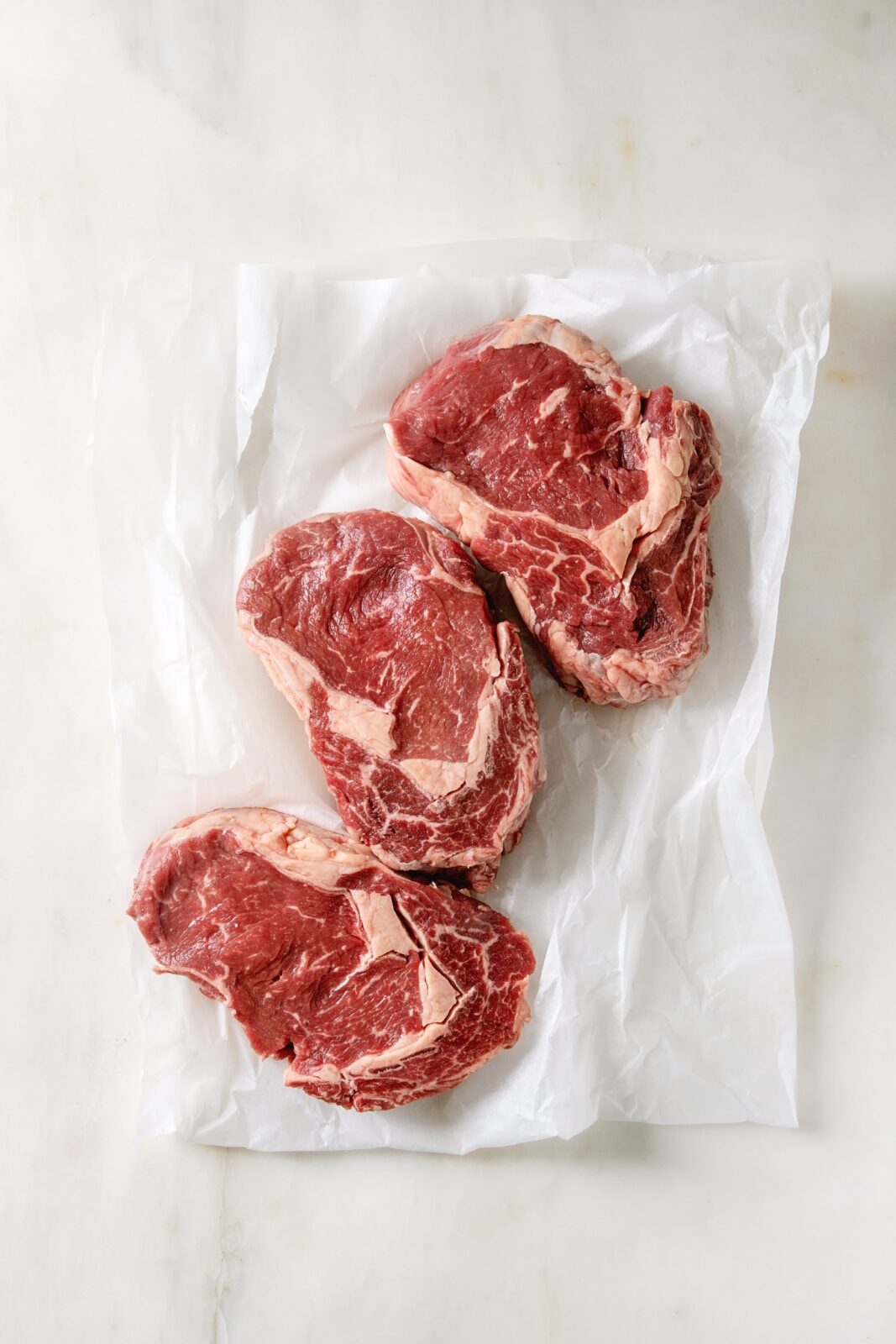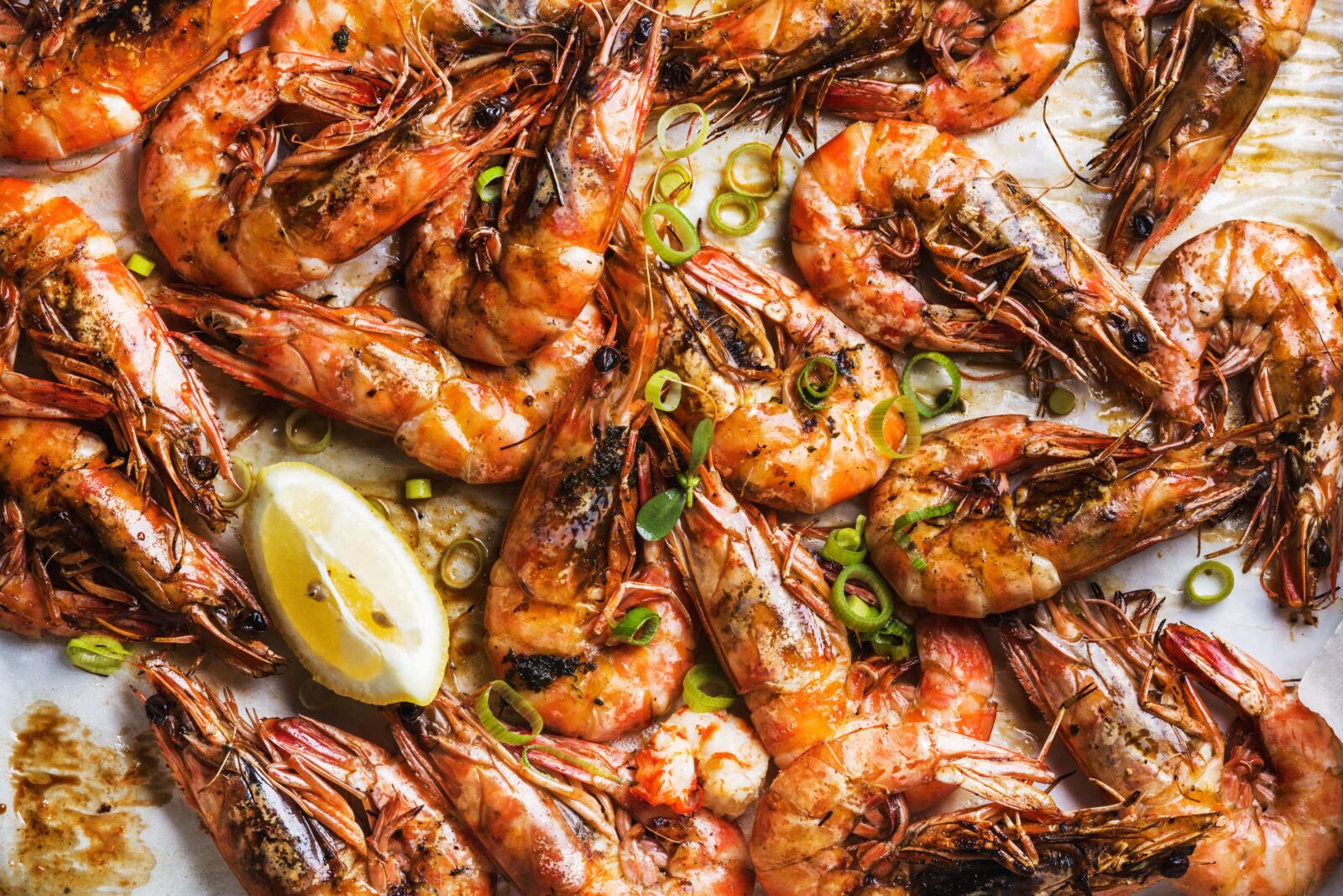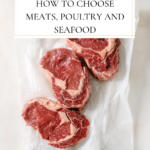Last updated on April 27th, 2023 at 02:53 pm
Eating meat as intended by nature, grass-fed or pastured, and organic plays a significant role in a healthy, traditional diet and lifestyle. Pastured meats like beef, chicken, lamb, and bison offer a variety of nutrients, including omega-3 fatty acids and CLA (conjugated linoleic acid), as well as nourishing fats, protein, minerals, and vitamins. While food labeling is confusing on purpose, we will break down how to choose meats that support overall wellness.
This post will contain information that discusses meat labels, which meats are the best to purchase, and how to choose the meats that benefit health.

How to choose meats when reading labels
Free-Range
“Free-range” means that the animals had access to the outdoors for a specified time, sometimes only five minutes. The animal may remain inside but can go outside and get some sunlight. For the most part, these animals don’t live outdoors.
Pasture-Fed or Raised
“Pasture-fed or raised” simply means that the animals spend time grazing on pasture rather than eating grain in a feedlot. This label, however, doesn’t mean that the animal didn’t receive antibiotics.
100% Vegetarian Diet
“100% Vegetarian Diet” means that these animals ate a purely vegetarian diet which sadly consists of genetically modified corn and/or soy. It is also important to note that if the label doesn’t say “100%, “the chances are that these animals didn’t eat a fully vegetarian diet. Always remember that chickens and turkeys are not vegetarian and that part of their natural diet includes insects and worms.
Grain-Fed
“Grain-fed” means that the animals ate grains as feed, which generally includes genetically modified corn. This doesn’t mean they always ate grains exclusively. They can also be eating animal by-products as supplementation. Always remember that cows, lambs, and bison are herbivores and naturally eat grass, not dry grains and legumes.
No Hormones Administered
This label means that the animals didn’t receive hormones during their lifecycle. Also, just because the label might say no hormones, this doesn’t mean the animals ate grass or didn’t receive antibiotics.
This is a basic breakdown of meat labels in general and how to choose meats. If you’d like to read and learn more, I did a very in-depth breakdown of food labels here. It is important to make the connections and realize that “you are what you eat, eat.” Once you know better, you can do better.
So what are the best options available when choosing meats?
Beef
It is best to purchase meat from pastured-fed cows, also known as grass-fed. These cows produce meat rich in conjugated linoleic acid and omega-3 fatty acids. The best way to find grass-fed beef is at a local farm, where you can see how they raise and treat their cattle. Like dairy products, you want to ensure that your direct supplier complies with local, state, and federal health and production codes.
Conventionally raised cows eat a diet of genetically modified corn and sometimes animal by-products. Moreover, these animals receive hormones and antibiotics, which make them grow faster and help prevent infections that arise from the animals living in horrendous conditions. Furthermore, beef from feedlots contains high amounts of omega-6s (hello inflammation), vastly different from 100% grass-fed beef rich in CLAs and omega-3 fatty acids. Another thing to be aware of is that they irradiate the meat before the beef even makes it to the grocery store. This is supposed to help destroy any bacteria that may be present in the meat, but it also destroys valuable nutrients. According to a study, the Center for Food Safety concluded that irradiation also doubles the amount of trans-fat in beef, increasing the risk of heart disease.
How to choose meats:
The best choice is to look for “organic and 100% grass-fed, grass-fed & finished, or 100% pasture-raised” beef.

Chicken
Chicken is sadly another meat that has become very industrialized. Conventional chickens live in packed large pens and eat a diet of genetically modified corn, soy, and animal by-products.
Pastured chickens can roam freely and eat all the insects, bugs, and foliage on the ground as they please. These chickens have more omega-3s and vitamin A compared to their industrial-raised counterparts.
How to choose meats:
The best choice is to look for “organic and pasture-raised” eggs and poultry.
Fish & Seafood
Farm-raised fish is quickly dominating and industrializing the fish market. The fish raised on these fish farms are often fed fish meal made of ingredients like animal-by products and other by-products from the milling and food processing industries. Another thing to note about farmed fish is that they get their flesh’s color from added additives.
How to choose meats:
The best choice is to look for “sustainability wild-caught” fish and seafood. I recommend using Consumer Guides to ensure the fish you purchase fall in this category.

Other meats like pastured pork, lamb, and game meats (deer, bison, etc.) are fantastic options.
Resources:
There are so many great resources online to ensure you get the best quality of meats directly from the farmers.
- Butcher Box (use this link to save $50 on your first box)
- US Wellness Meats
- Grassroots Farmers Cooperative
- 915 Farm
- White Oak Pastures
- Wild Pastures
Read more: “Simple Steps To Navigate The Grocery Store.”





+ view comments